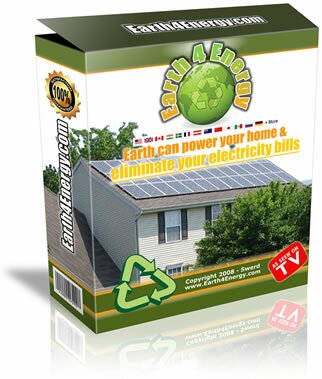
The solar panel is one of the key components of a residential solar power system. This part will have direct exposure to sun light which is the primary energy source. How to do you select the right solar panel for your home improvement project? The following is a list of 7 tips you can use as the criteria when choosing the right solar panel.
1) Strong Panel Box.
As you may already guessed, the home solar panel will be left on the roof. It will be exposed to the hot sun, strong wind, rain, snow fall, dust etc.
The most important step you have to take is to make sure the solar panel comes with a strong box. The strength of the box will determine its life span.
2) Light Panel Box.
When choosing a solar panel, look for one that comes with a light panel box. A light box will reduce the weight stress on the roof tiles and trusses.
Here’s a tip, look for panel box made from a single sheet of aluminum manganese alloy. For added strength, look for one that has been anodized for corrosion protection.
The best box is made without any seam. If you see any rivets, that can act as weak points in the structure.
3) Strong, low reflection, high absorption and low emissivity glazing.
Look for a solar panel box with strong and clear glass cover. Something within the range of 4 mm would be fine.
You want the glass to be thick enough so it would not break it case it is struck by hail. You also want the glazing to be clear so a higher percentage of sun light will reach the Photovoltaic (PV) cells.
4) Water tight design.
When choosing a solar panel, look for one with a water tight design. This is crucial as the panel will be subjected to rain and show.
The problem is when moisture seeps into the PV cells area. The problem caused by this effect is either fogging or condensation. Look for a box with a good seal around the area where cables are coming out.
5) Guarantee from the manufacturer.
You want to look for solar panel with a good manufacturer guarantee coverage. If the manufacturer is confident on their product, they will provide guarantee ranging from 5 to 10 years or more.
6) Minimum maintenance.
The best solar panel needs only minimum maintenance. Unfortunately, you would not be able to find a system with maintenance free. You need to periodically clean the glazing to keep it clear.
The key here is “minimum” maintenance. Once or twice a year should be sufficient.
7) Strong and easy to fit fittings.
Look for solar panel with strong fittings. Preferably, the fittings should be made from anodized aluminum which is strong, light and corrosion proof.
Also, find a panel with multiple types of fittings so it can be attached to tiles, slates, pan tiles, bitumen and flat roofs easily.
There it is, the 7 tips on choosing the right residential solar panel. To find the perfect solar array will take some time. There are a lot of solar manufacturers with thousand of models to choose from. Not all panels will be able to fulfill the entire requirement above. In a time like this, you may have to compromise.
For more information on how to build your own home solar power system, be sure to check out Michael Harvey’s Earth 4 Energy e-book.
The manual has many more tips and tricks on how to find cheap parts for your DIY solar energy system. Be sure to check out the Earth 4 energy review on this blog.
 There are many homemade solar system manuals now available in the market. You can get a paperback book from Borders or Barnes and Nobel bookstore and even download an e-book from the internet. But honestly, what can you expect from this kind of
There are many homemade solar system manuals now available in the market. You can get a paperback book from Borders or Barnes and Nobel bookstore and even download an e-book from the internet. But honestly, what can you expect from this kind of